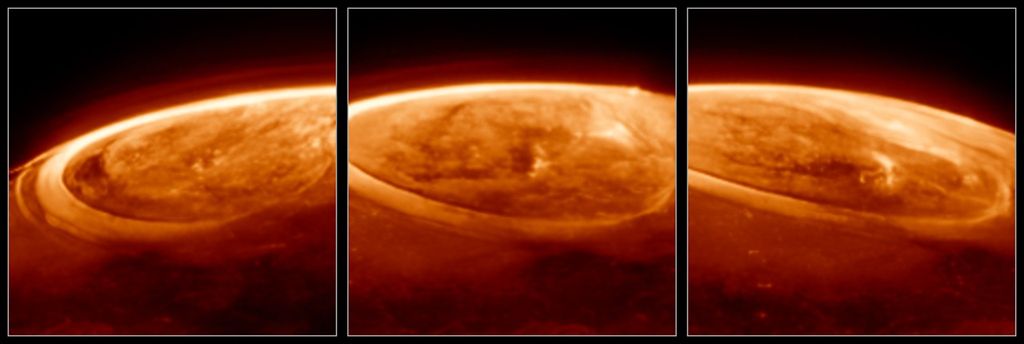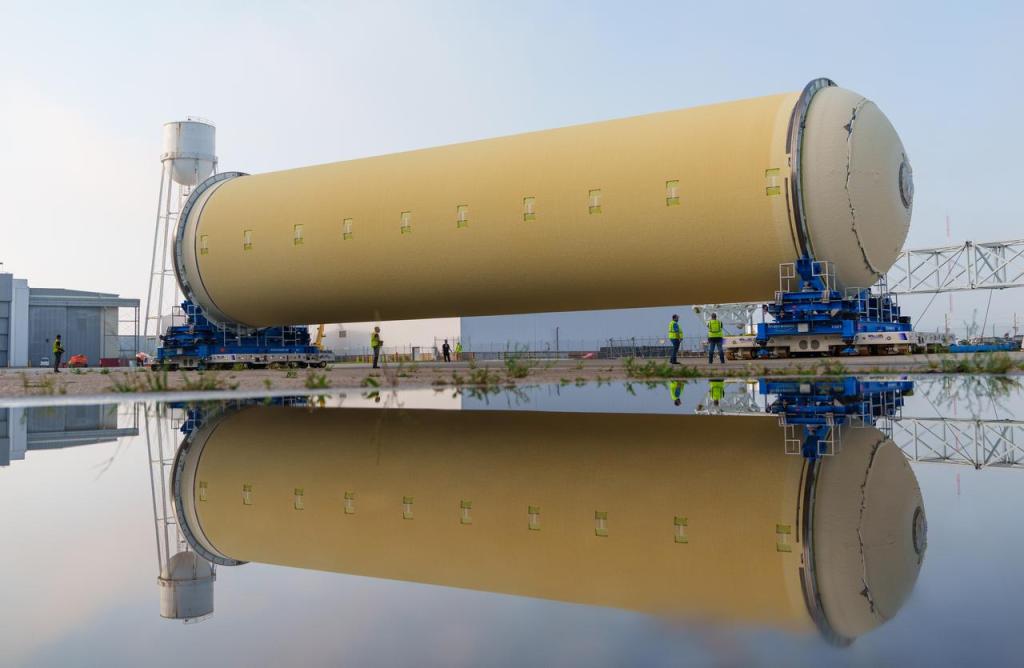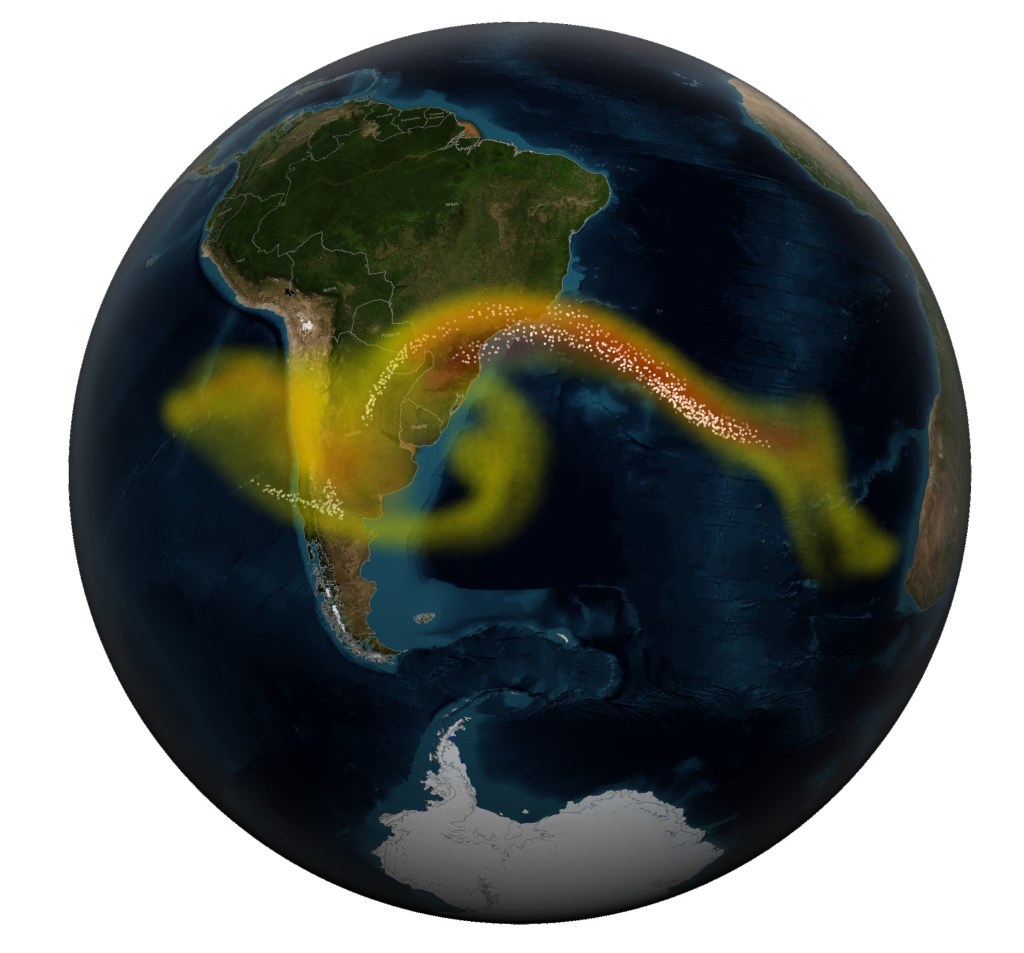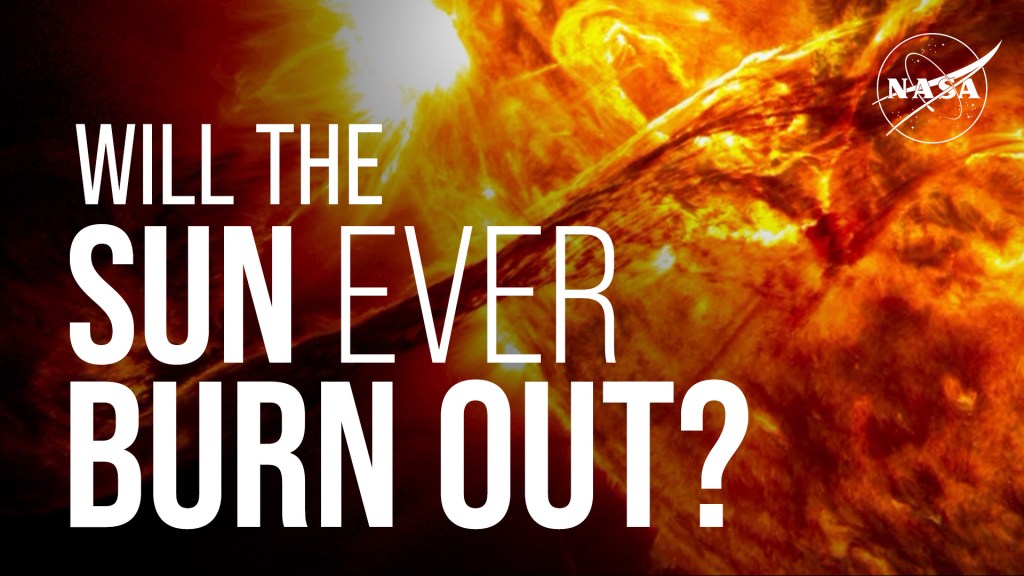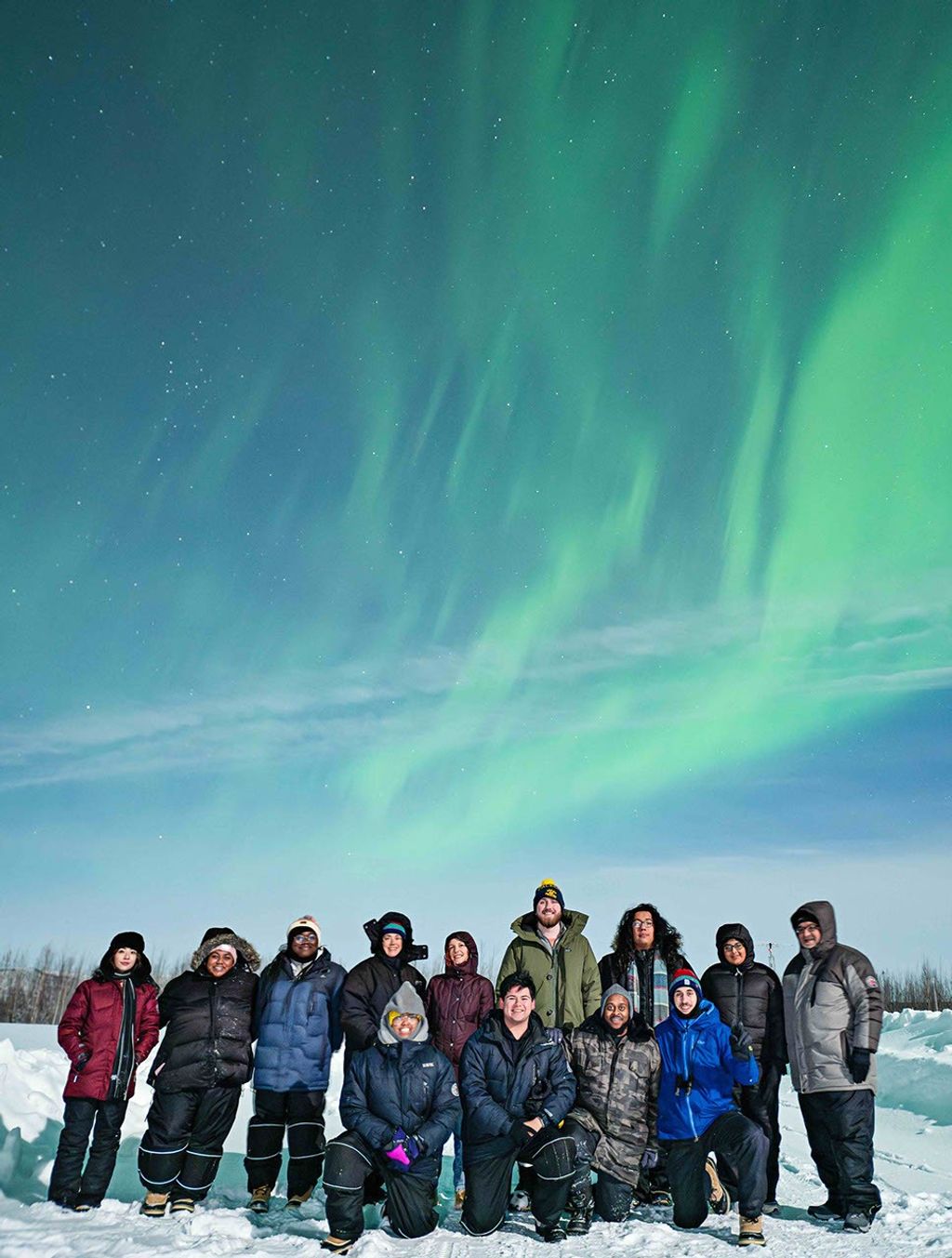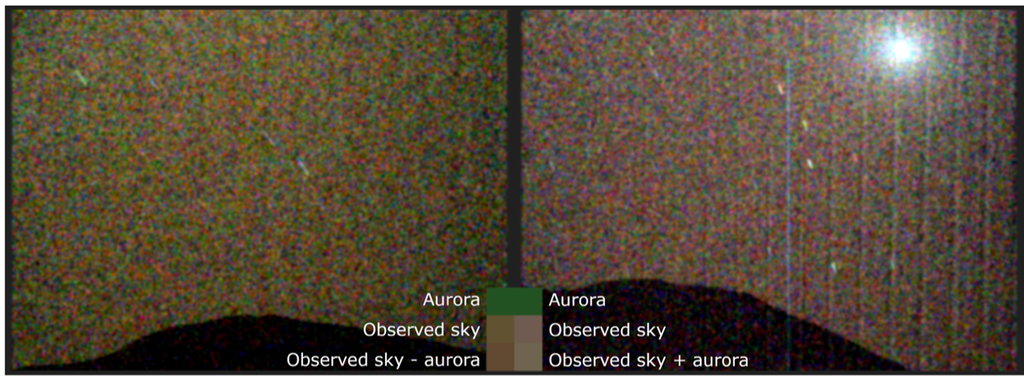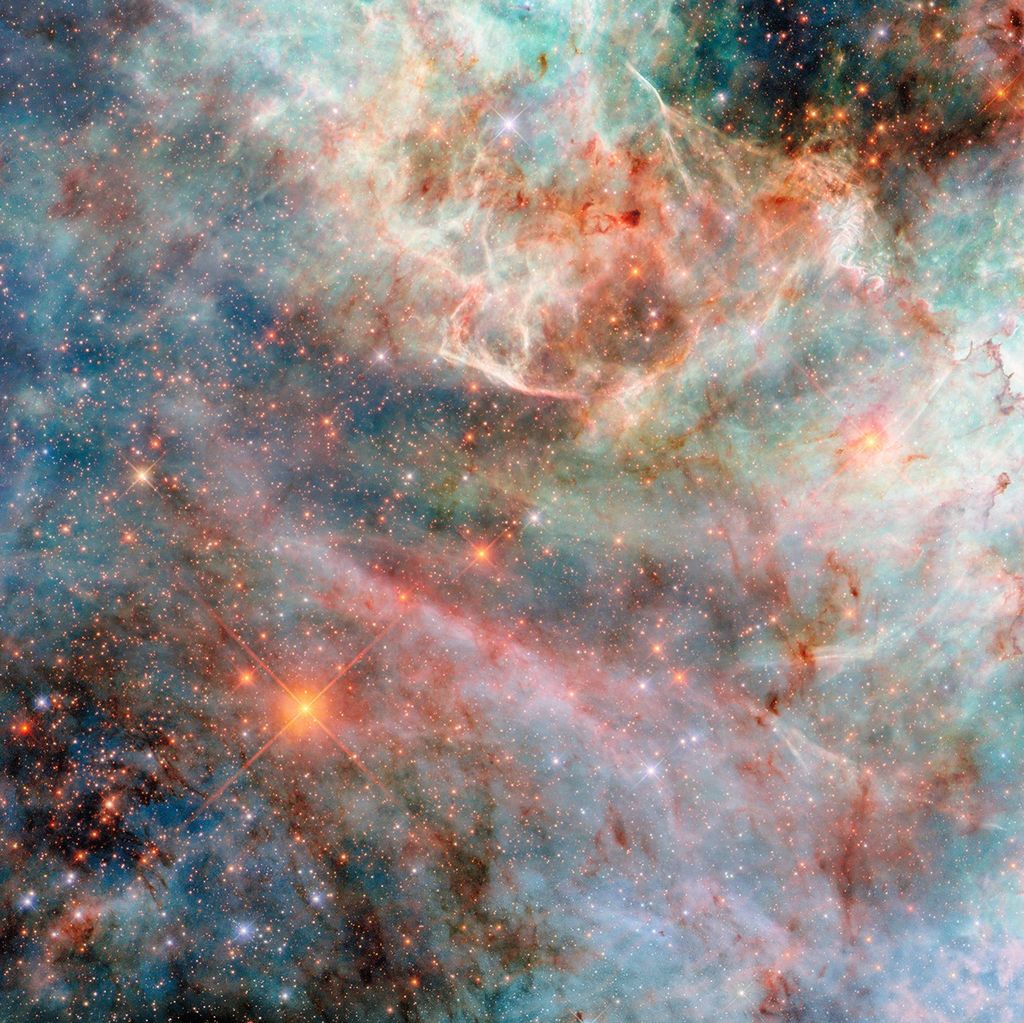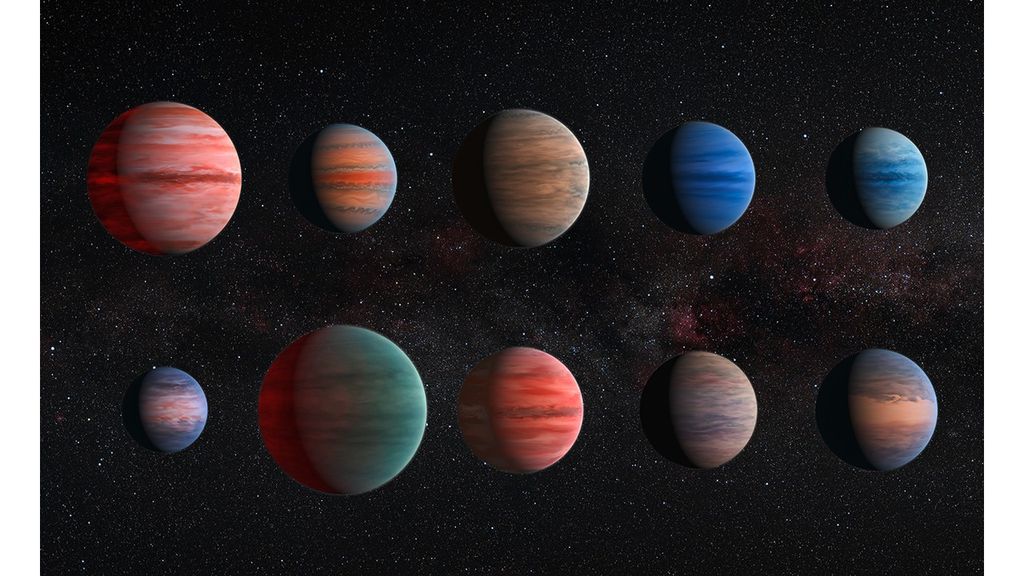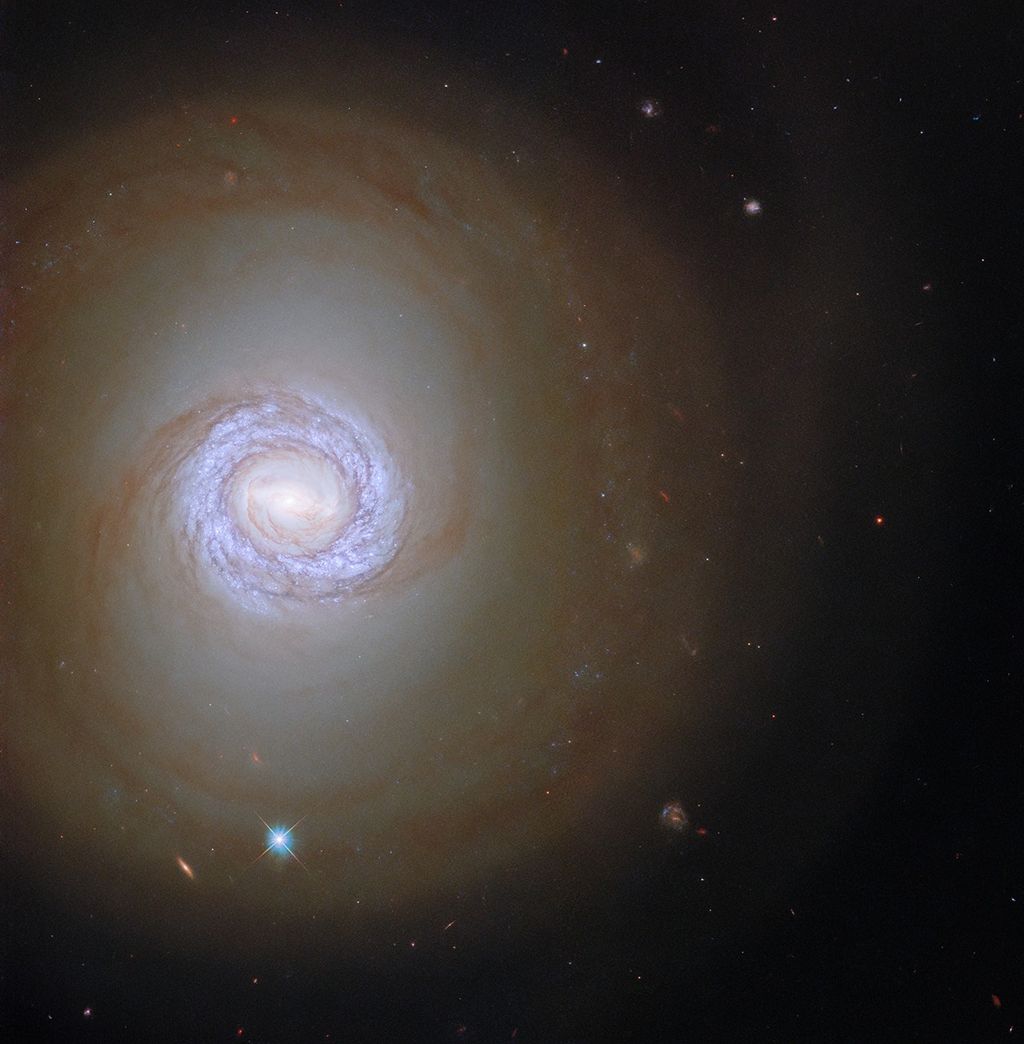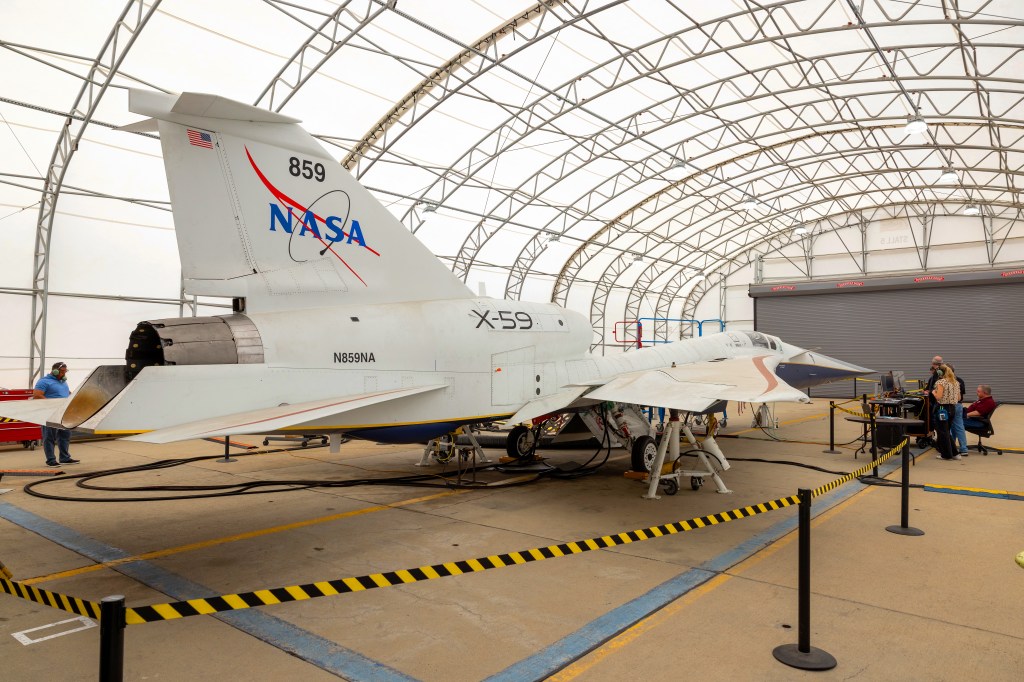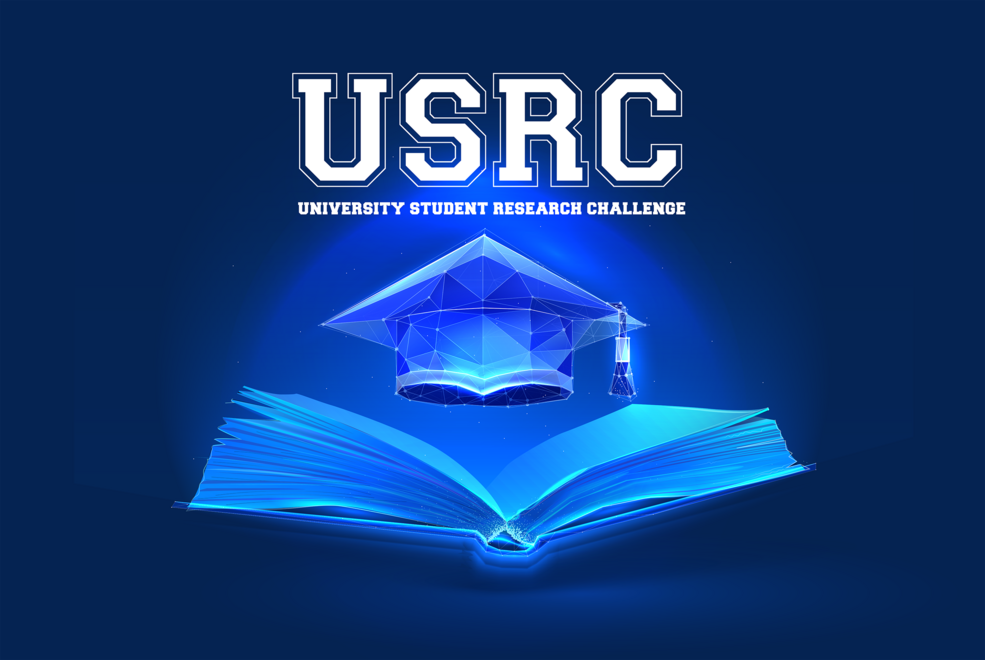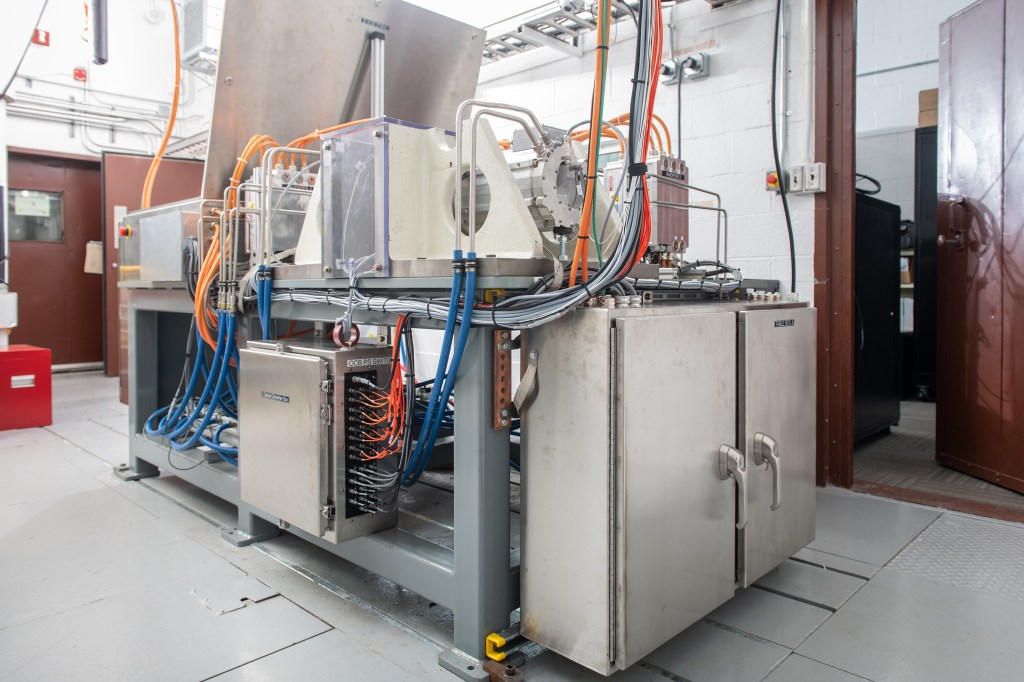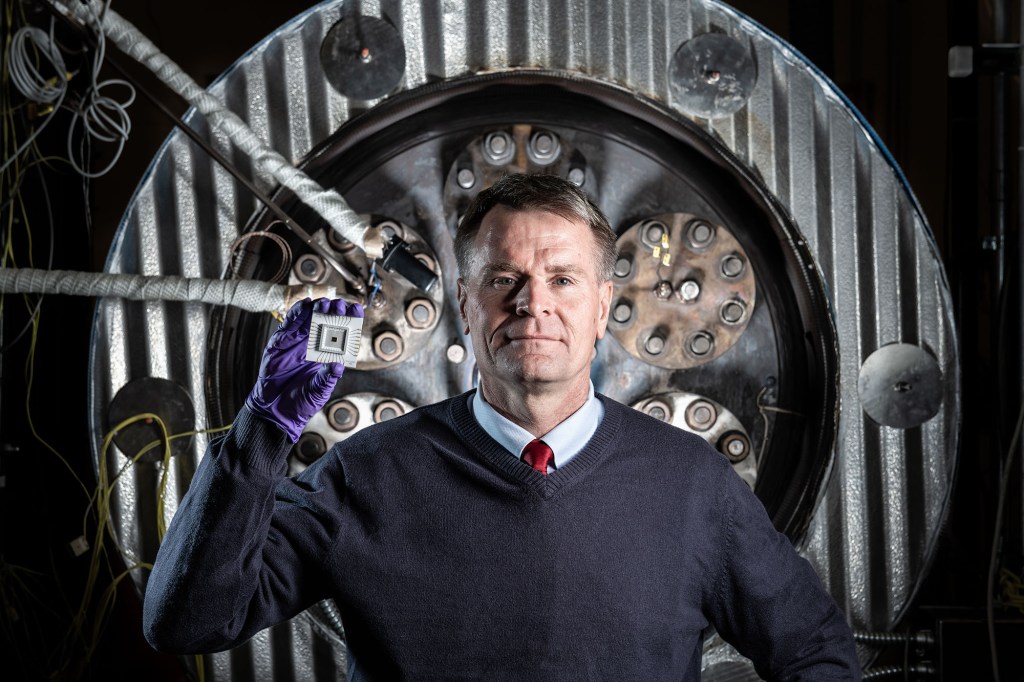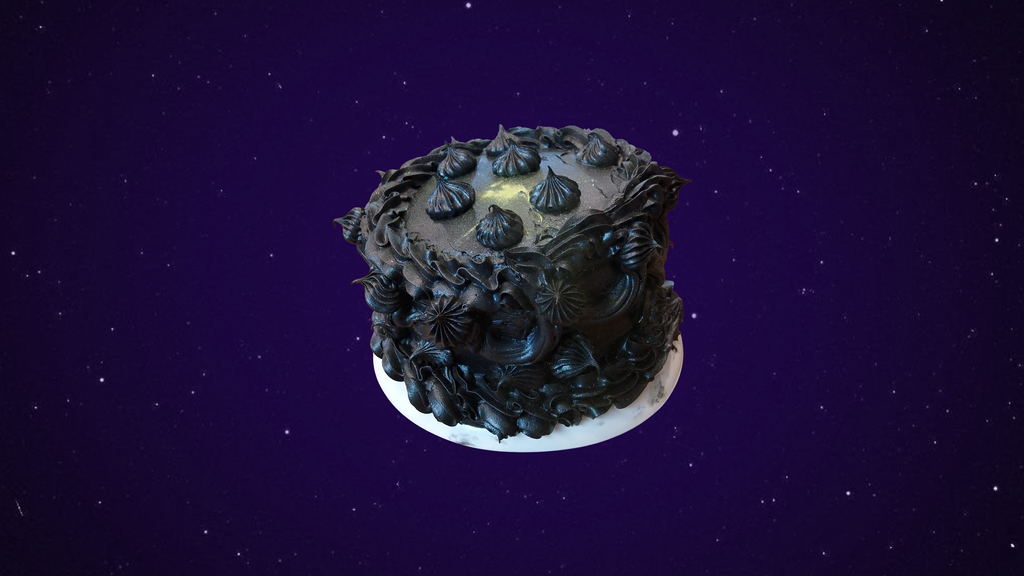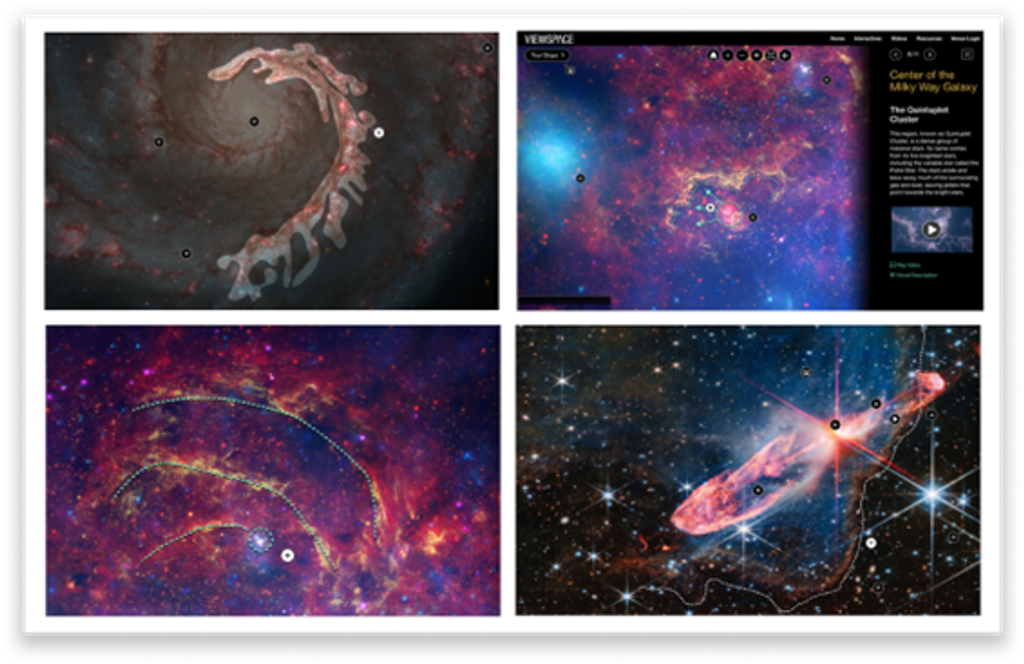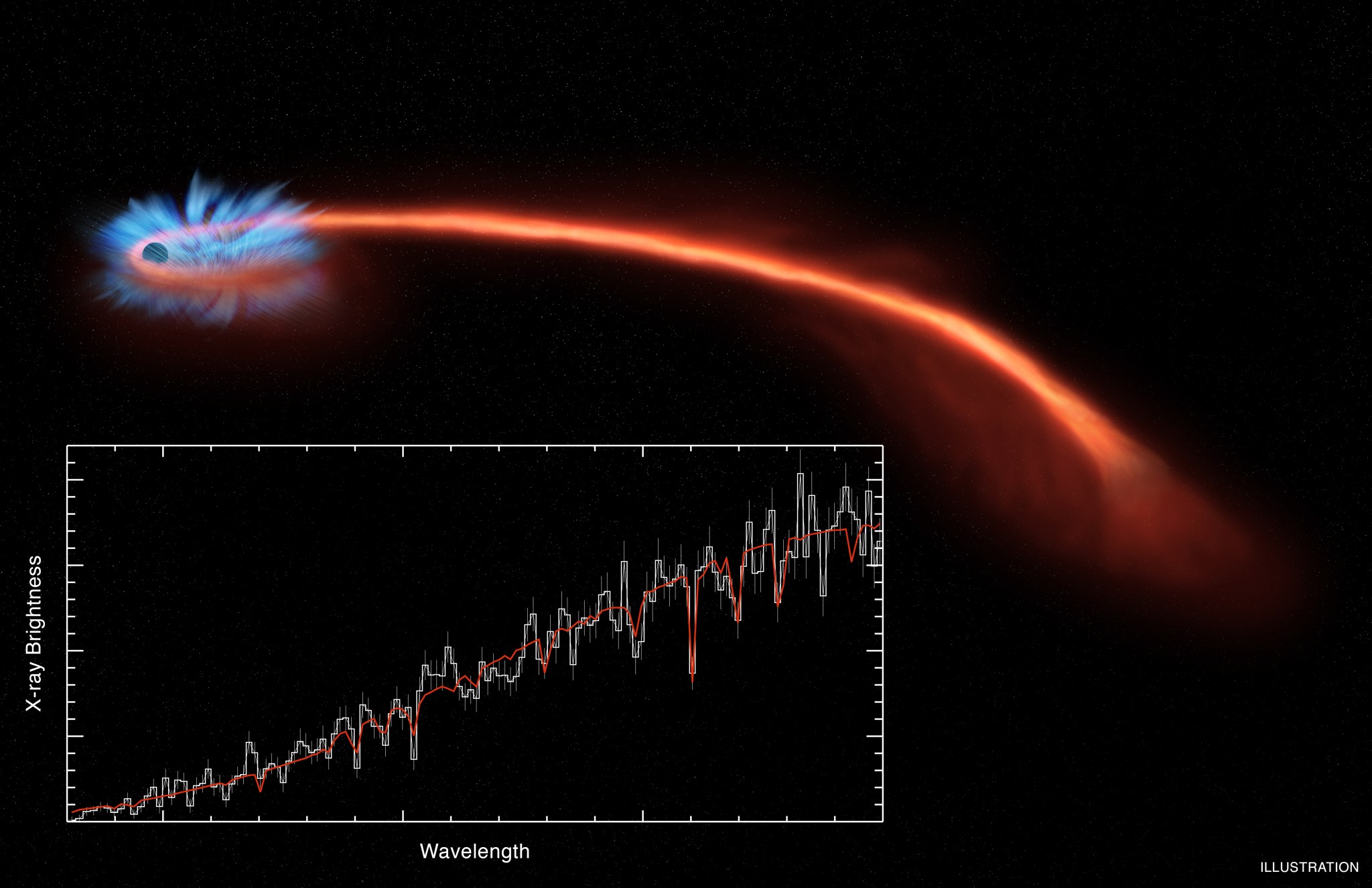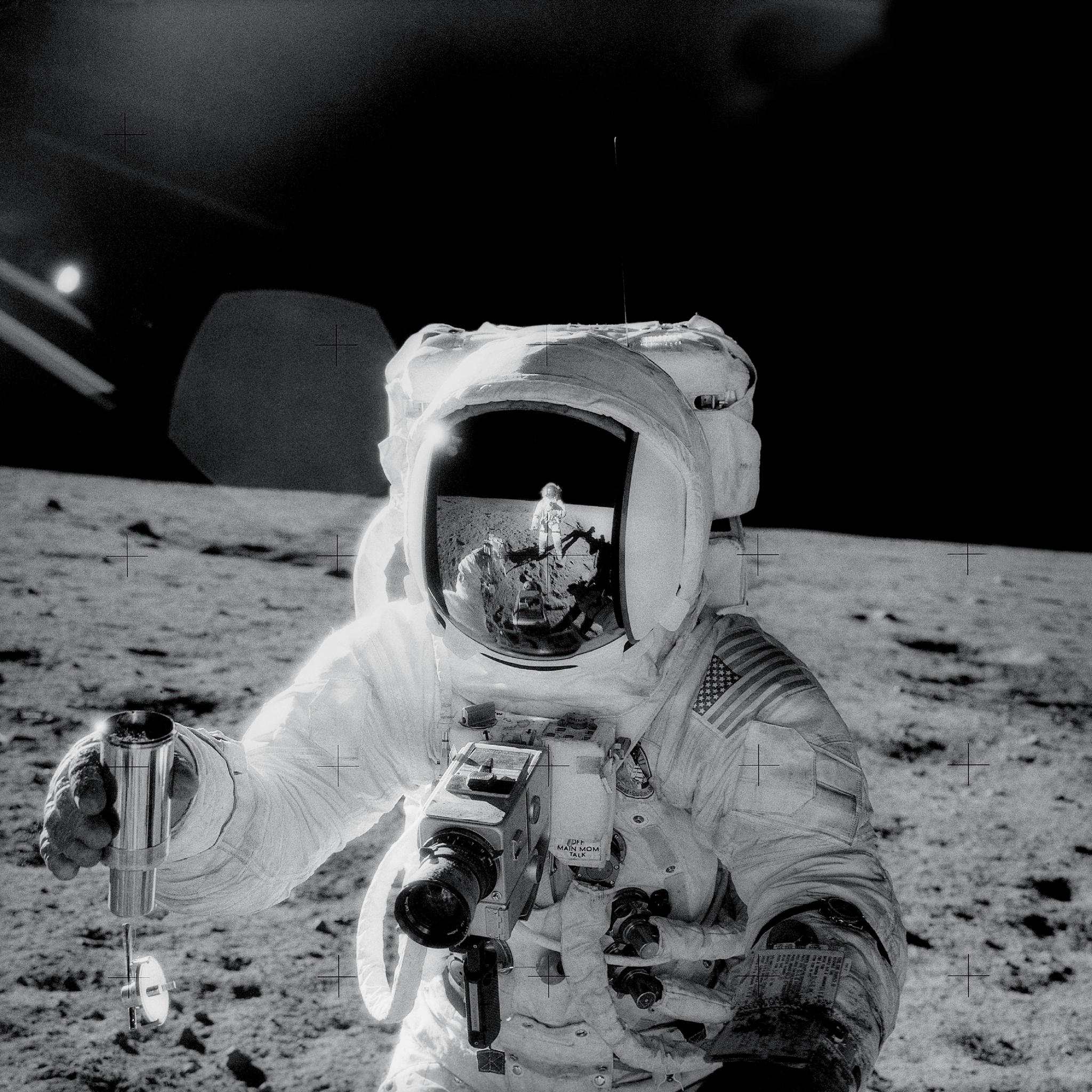In This Week’s Star
- Getting Ready to Fly
- AMRO Fabricating Corp. Lining up Panels for NASA’s Space Launch System
- Martin Weisskopf Discusses 38 Years at Marshall and 16 Years of Chandra Discoveries
- Destroyed Star Rains Onto Black Hole, Winds Blow It Back
- Marshall Team Members Learn About Latest Technology and Advancements at IT & Cyber Security Expo
- Marshall Hosts Annual NASA Education Meeting with Texas State University
- CFC Volunteers Prepare Ornaments to ‘Deck the Halls’ of Burritt on Mountain
- Marshall Honors Veterans for Their Service at Nov. 9 Meet and Greet Program
- Native American Heritage Celebrated at Nov. 3 Marshall Event
- This Week in NASA History: Apollo 12 Launches for Second Moon Landing — Nov. 14, 1969
- Placement of RS-25 Engine on a Stennis Center Test Stand Featured on ‘This Week @NASA’
- Obituaries
Getting Ready to Fly
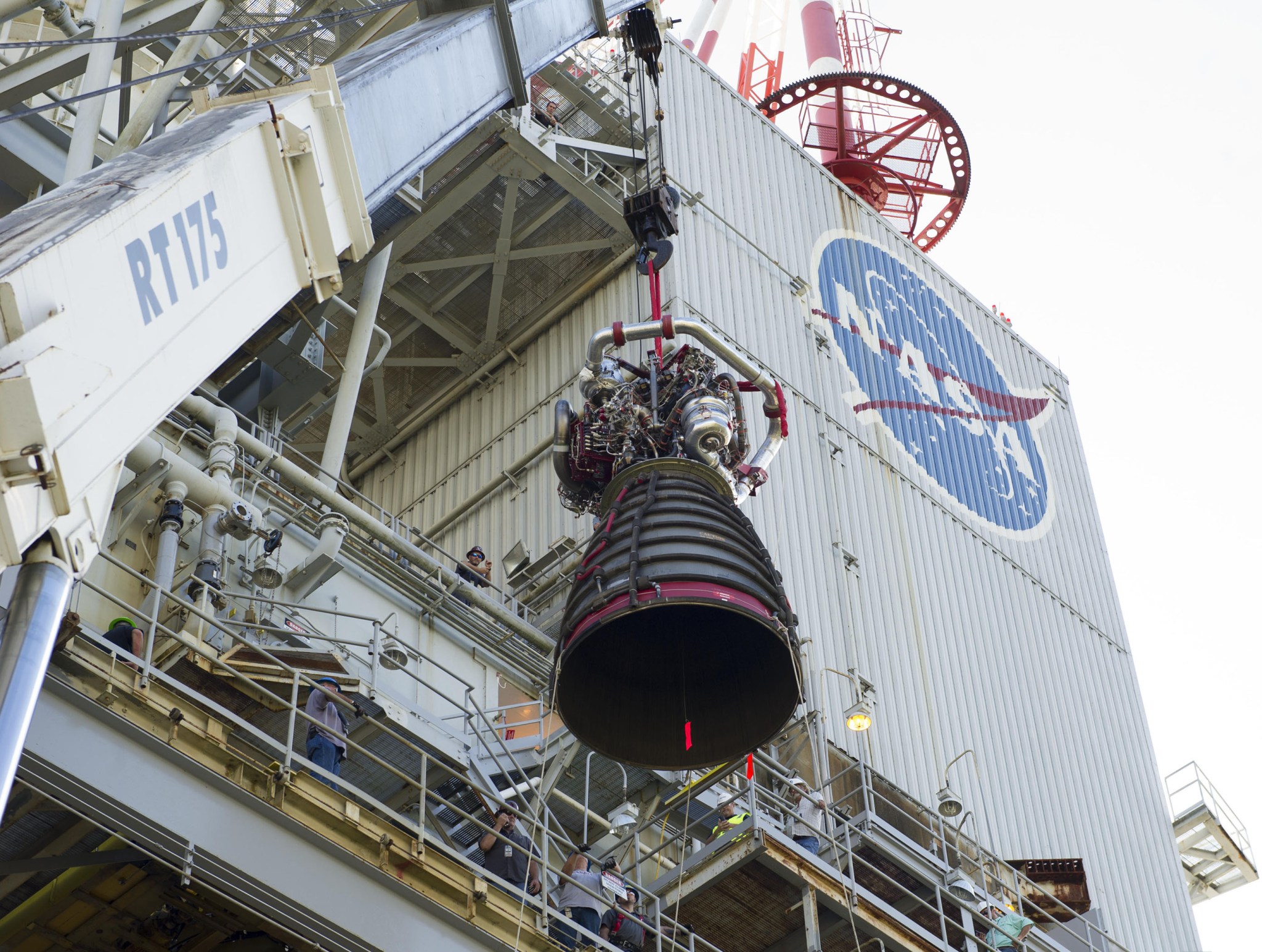
NASA took the next big step Nov. 4 on the journey to Mars by placing the first RS-25 flight engine on the A-1 test stand at the agency’s Stennis Space Center. The engine will be tested in the first part of 2016 to certify it for use on NASA’s new rocket, the Space Launch System. SLS will be the most powerful rocket ever built and, with the agency’s Orion spacecraft, will launch America into a new era of exploration to destinations beyond Earth’s orbit. More on the engine install here. (NASA/Stennis)
AMRO Fabricating Corp. Lining up Panels for NASA’s Space Launch System
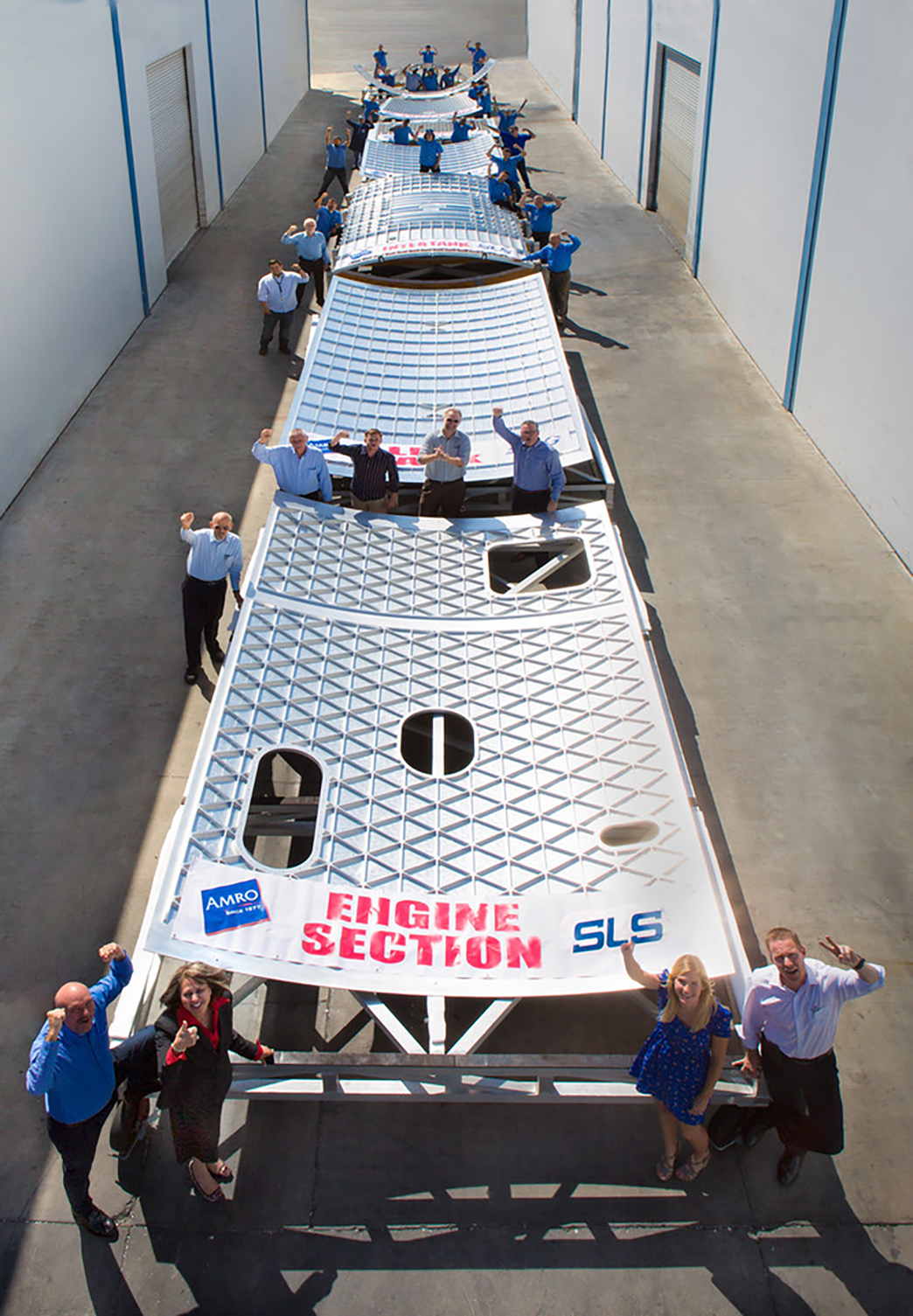
Teams at AMRO Fabricating Corp. in South El Monte, California, show completed flight and structural test article hardware panels, arranged in order, for each section of NASA’s new rocket, the Space Launch System. SLS will be the most powerful rocket ever built and, with NASA’s Orion spacecraft, will launch America into a new era of exploration to destinations beyond Earth’s orbit. AMRO is an industry partner helping build panels for the SLS core stage, launch vehicle stage adapter and Orion spacecraft. The panels, above, from bottom to top, represent the SLS engine section, liquid hydrogen tank, intertank, liquid oxygen tank, forward skirt, LVSA and Orion. NASA’s Marshall Space Flight Center manages the SLS Program for the agency. (AMRO)
Martin Weisskopf Discusses 38 Years at Marshall and 16 Years of Chandra Discoveries
By Brian C. Massey
Martin Weisskopf’s relationship with NASA’s Marshall Space Flight Center began more than 40 years ago. As a young assistant professor of physics at the Ivy League’s Columbia University in New York City, he worked closely with NASA’s High Energy Astronomy Observatory Program, which was managed by Marshall.
In 1977, Weisskopf became Marshall’s chief scientist for X-ray astronomy as planning began for HEAO’s successor, the Advanced X-ray Astrophysics Facility.
For the next 22 years, he and his team of scientists worked closely with Marshall engineers and management to develop AXAF, which would have its name changed to the Chandra X-ray Observatory. Weisskopf’s primary role on Chandra was to serve as the on-site representative for the scientific community. Heavily involved with the spacecraft’s specifications and calibrations, he and his team also provided feedback about how engineering decisions could affect its scientific operations.
In 1999, Chandra finally received its ticket to space on space shuttle Columbia. After two scrubbed launch attempts — one of which was called just seven seconds before launch — on July 9, 1999, Chandra finally made its way into orbit.
As stressful and exciting as two scrubbed launch attempts and a successful launch are, the most stressful moment for Weisskopf came a month later when Chandra was turned on for the first time. While Chandra made its way into space, he made his way to Cambridge, Massachusetts, to the Smithsonian Astrophysical Observatory, where Chandra is operated, for the most exciting moment of his career.
In front of panel after panel of displays and instrumentation, he and the team prepared for the first real-time images to return from Chandra. Systematically, the team powered up the spacecraft. One by one they remotely opened doors and started instrumentation.
“It went in little steps, instead of starting all at once,” Weisskopf said. “As each door opened, we would get reports — ’15 degrees, now 20.’ We would all hold our collective breath, waiting for the door to reach 65 degrees — the mark needed to give us a clear shot. It seemed like it took forever. It was extremely tense.
“When everything was up and running, we started taking X-ray data,” said Weisskopf. “Without even doing a focus test, we were immediately impressed by the results. It was discovery after discovery from the start.”
After startup, with the observatory aimed at a bright, extra-galactic source for instrument calibration, the team discovered an X-ray jet never before seen by earlier telescopes.
“As a scientist it doesn’t get any better than that,” said Weisskopf. “That’s what we as scientists live for. But to be getting these types of images, we just couldn’t believe it.”
Results only got better when the team performed its “formal first light” — Chandra’s official coming-out party. With media, officials and leadership on hand for the observatory’s first real exercise in scientific exploration, they found themselves in awe again.
“We had chosen a supernova remnant in the Cassiopeia constellation, Cassiopeia A,” said Weisskopf. “Having examined it with other observatories we knew the sharpness of Chandra would give us a spectacular image.
“Sure enough, it was more spectacular than we could ever have imagined. Within the first five minutes of data examining Cas A with Chandra, we had found the missing neutron star that we speculated would accompany it.”
Chandra was designed with a mission life of three years, with a goal of five. It exceeded all expectations, and 16 years later, Chandra’s still going strong. One of NASA’s most successful science programs ever, Chandra continues to amaze.
“The fact that Chandra has been so successful, is a direct result of teamwork,” said Weisskopf. “Over the years scientists, engineers and leadership at Marshall have learned to work well together. That, paired with the experience and infrastructure here, I can’t think of a better place for a project like Chandra. Marshall knows how to do big X-ray programs, and how to do them well.”
Just as Chandra continues to keep going strong, so does Weisskopf. “I am extremely proud of the work we’ve done at Marshall and of my career, and I’ll tell you — it’s not over yet. When I started at Marshall, there were some who thought I was too young. Now, 38 years later, there are some who think I’m too old. Well, they were wrong then and they’re wrong now. There’s still a lot of work to be done, and I’m excited to be part of it.”
Massey, an ASRC Federal/Analytical Services employee and the Marshall Star editor, supports the Office of Strategic Analysis & Communications.
Destroyed Star Rains Onto Black Hole, Winds Blow It Back
New details about what happens when a black hole tears apart a star have been gathered by a trio of orbiting X-ray telescopes, giving scientists an extraordinary opportunity to understand the extreme environment around a black hole.
When a star comes too close to a black hole, the intense gravity of the black hole results in tidal forces that can rip the star apart. In these events, called “tidal disruptions,” some of the stellar debris is flung outward at high speeds, while the rest falls toward the black hole. This causes a distinct X-ray flare that can last for a few years.
NASA’s Chandra X-ray Observatory, Swift Gamma-ray Burst Explorer, and ESA/NASA’s XMM-Newton collected different pieces of this astronomical puzzle in a tidal disruption event called ASASSN-14li, originally discovered in an optical search by the All-Sky Automated Survey for Supernovae in November 2014.
The event occurred near a supermassive black hole estimated to weigh a few million times the mass of the sun. The black hole is located in the center of PGC 043234, a galaxy that lies about 290 million light years from Earth. This makes this event the closest tidal disruption discovered in a decade.
“We have seen evidence for a handful of tidal disruptions over the years and have developed a lot of ideas of what goes on,” said Jon Miller of the University of Michigan in Ann Arbor, who led the study that is described in a paper published in the latest issue of Nature. “This one is the best chance we have had so far to really understand what happens when a black hole shreds a star.”
After the star is destroyed, the black hole’s strong gravitational force pulls most of the remains of the star toward it. This infalling debris is heated to millions of degrees and generates a huge amount of X-ray light. Soon after this surge of X-rays, the amount of light decreases as the material falls beyond the black hole’s event horizon, the point beyond which no light can escape.
Gas often falls toward black holes by spiraling inward in a disk. But how this process starts has remained a mystery. In ASASSN-14li, astronomers were able to witness the formation of such a disk by looking at the X-ray light at different wavelengths and tracking how that changed over time.
The researchers determined that the X-rays being produced come from material that is either very close to or is actually in the smallest possible stable orbit around the black hole.
“The black hole tears the star apart and starts swallowing material really quickly, but that’s not the end of the story,” said co-author Jelle Kaastra of the Institute for Space Research in the Netherlands. “The black hole can’t keep up that pace so it expels some of the material outwards.”
The X-ray data also suggest the presence of a wind moving away from the black hole. The wind is not moving fast enough to escape the black hole’s gravitational grasp. An alternative explanation for the relatively low speed is that gas from the disrupted star is following an elliptical orbit around the black hole and is at the greatest distance from the black hole where it is traveling the slowest.
“These results support some of our newest ideas for the structure and evolution of tidal disruption events,” said Cole Miller, a co-author from the University of Maryland in College Park. “In the future, tidal disruptions can provide us with laboratories to study the effects of extreme gravity.”
Astronomers are hoping to find more events like ASASSN-14li, which they can use to continue to test theoretical models about how black holes affect their environments and anything that might wander too close.
These results appear in the Oct. 22 issue of the journal Nature. NASA’s Marshall Space Flight Center manages the Chandra program for NASA’s Science Mission Directorate. The Smithsonian Astrophysical Observatory in Cambridge, Massachusetts, controls Chandra’s science and flight operations. Swift is managed by NASA’s Goddard Space Flight Center. XMM-Newton is a joint NASA-European Space Agency orbiting observatory.
To read more about NASA’s Chandra X-ray Observatory, click here.
For more Chandra images, multimedia and related materials, click here.
Marshall Team Members Learn About Latest Technology and Advancements at IT & Cyber Security Expo
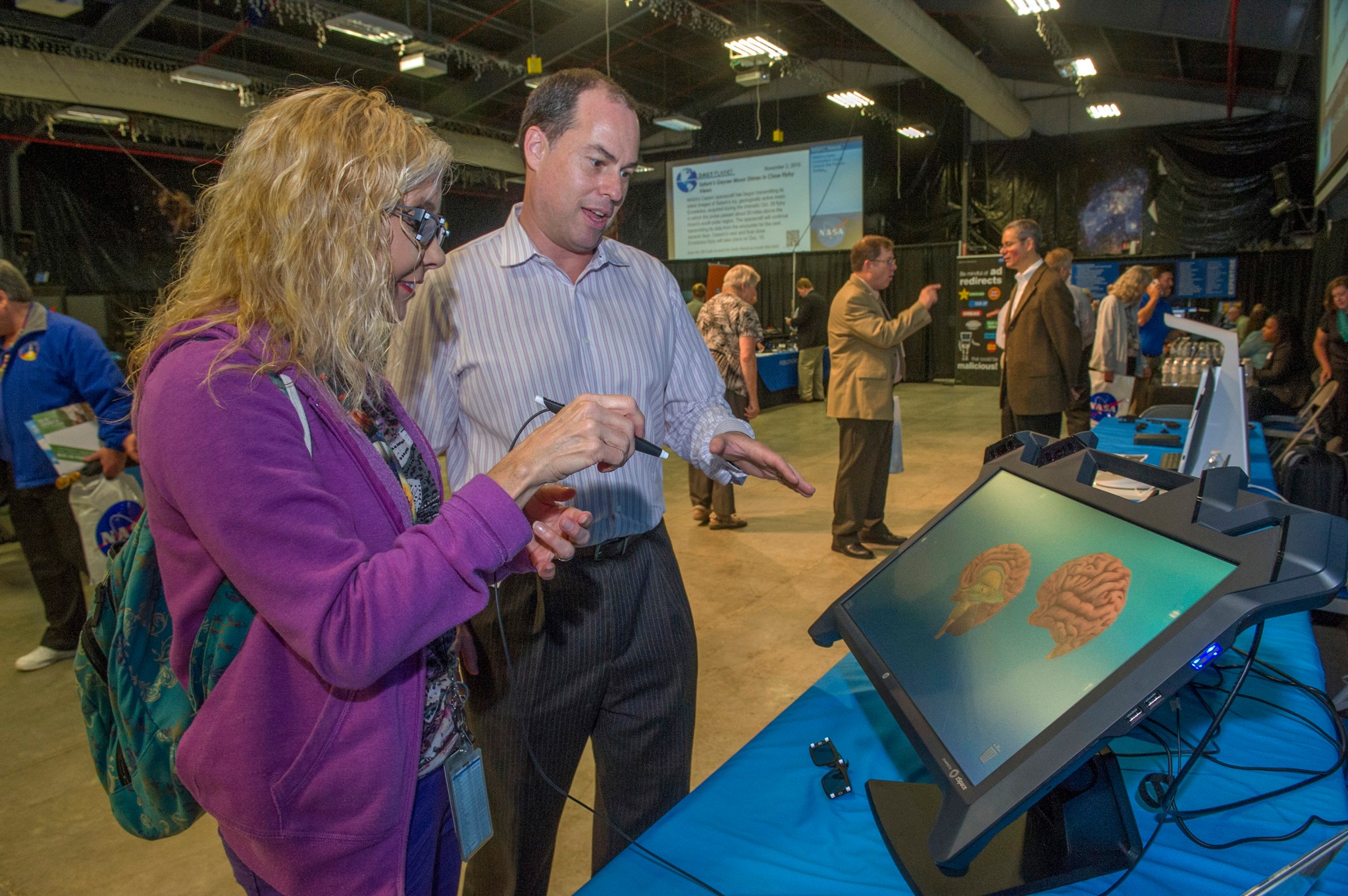
Two popular events at NASA’s Marshall Space Flight Center, the Cyber Security Awareness Event and the Innovation and Technology Expo, combined this year for the IT & Cyber Security Expo. Here, Jo Weddendorf, left, of Marshall’s Program Integration Office, tests an HP Virtual Reality Monitor as Client Specialist Geoffrey Levene explains its operation. At the Nov. 3 event, hosted by the Office of the Chief Information Officer, Marshall team members learned about technologies being developed and applied at Marshall as well as the latest advancements in cyber security. (NASA/MSFC/Emmett Given)
Marshall Hosts Annual NASA Education Meeting with Texas State University
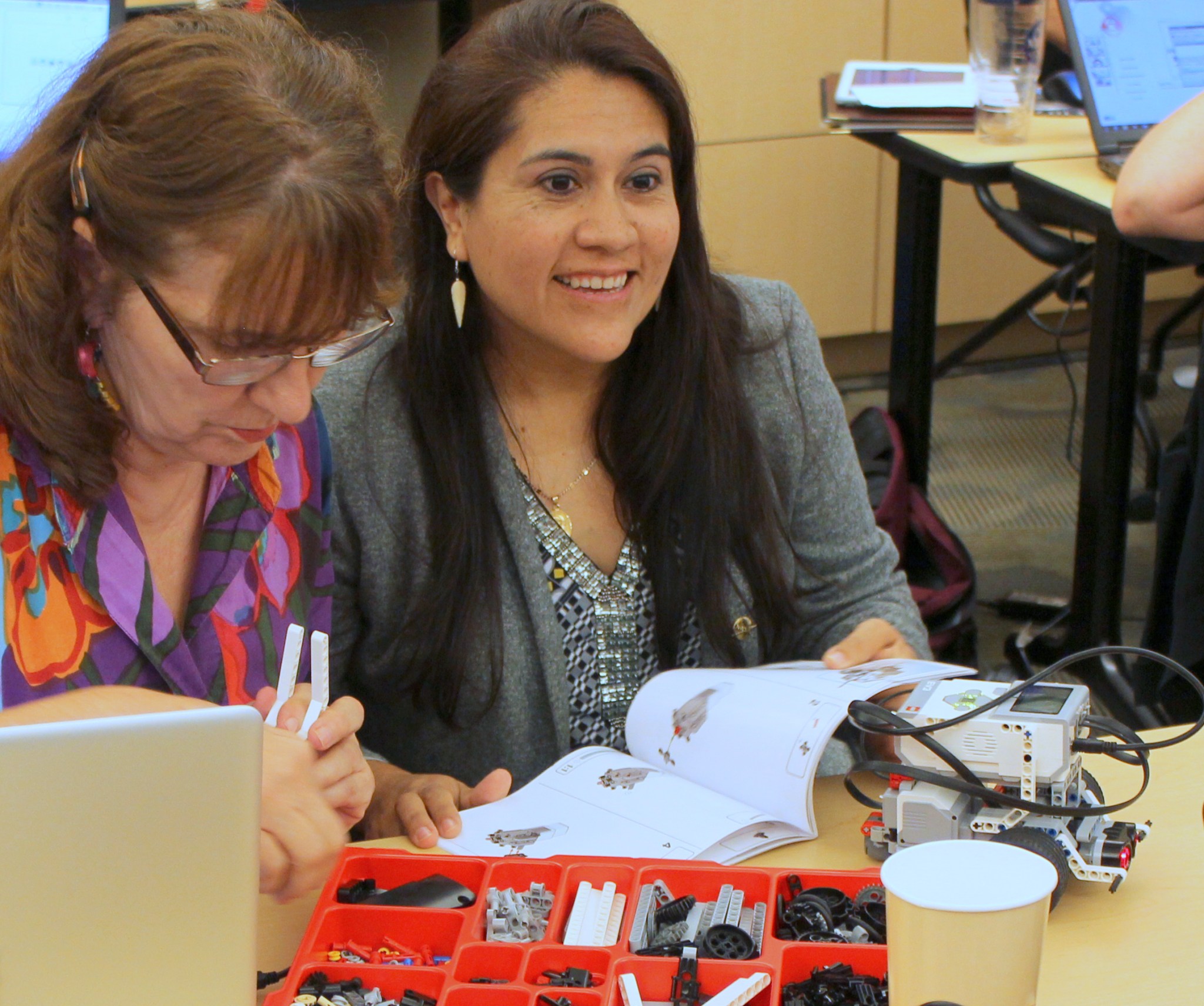
Dr. Araceli Ortiz, right, principal investigator for the NASA Educator Professional Development Collaborative, participates in a robotic workshop during the group’s annual staff meeting, held Nov. 2-6 at NASA’s Marshall Space Flight Center. Known as NASA EPDC, this national network of education specialists are regionally located at each of NASA’s 10 field centers and are managed by Texas State University in Houston. This weeklong workshop is designed to improve staff teaching abilities in the STEM fields of science, technology, engineering and mathematics. Throughout the week, the group worked with professional educators and presenters to discuss innovative strategies toward improving pedagogy and defining best practices toward teaching the next generation of scientists, engineers and explorers. (NASA/MSCF/Christopher Blair)
CFC Volunteers Prepare Ornaments to ‘Deck the Halls’ of Burritt on Mountain
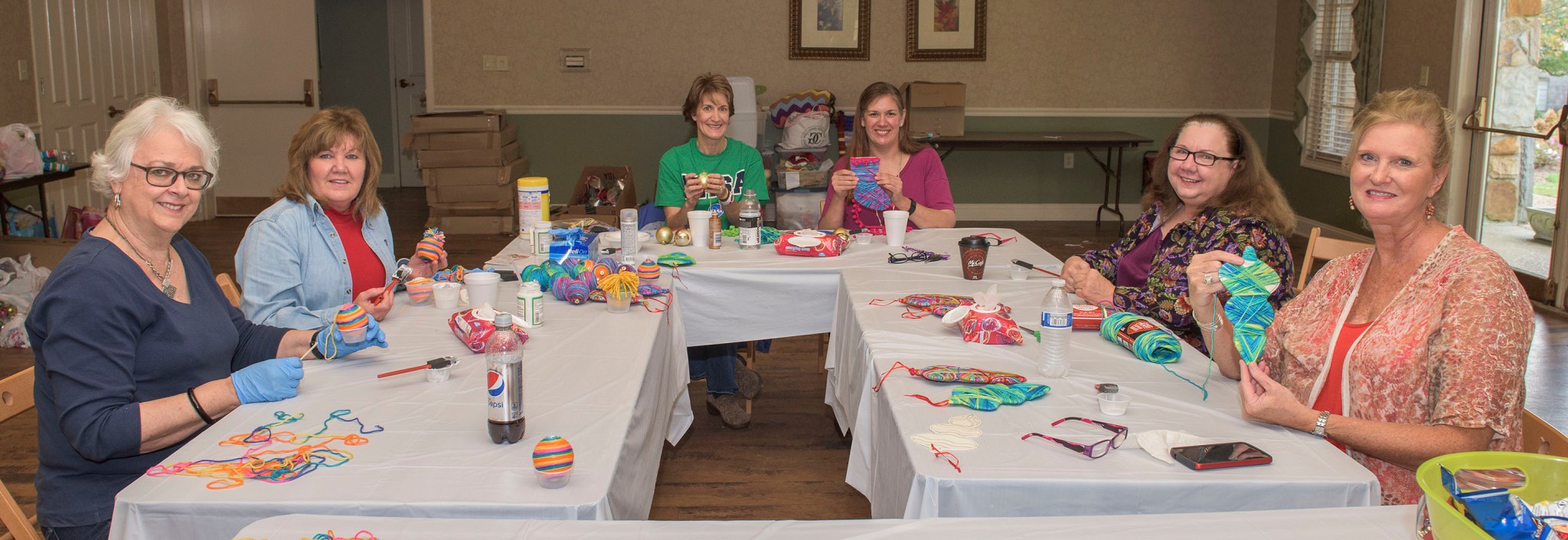
Combined Federal Campaign volunteers from NASA’s Marshall Space Flight Center work to create Christmas ornaments for Burritt on the Mountain to use as part of its holiday season décor. Burritt, an open-air museum in Huntsville, hosts educational, artistic and recreational events throughout the year. Working on ornaments are, from left, Jean Payne, Human Resources Services Office; Cecelia Culver, Resources Management & Integration Office; Sara Masterson, Spacecraft & Vehicle Systems Department; Mary Nehls, Propulsion Systems Department; Shelley Marshall, Office of Strategic Analysis & Communications; and Diane Pearson, Engineering Directorate. For more information on CFC volunteer opportunities, visit the CFC site on ExplorNet. (NASA/MSFC/Fred Deaton)
Marshall Honors Veterans for Their Service at Nov. 9 Meet and Greet Program
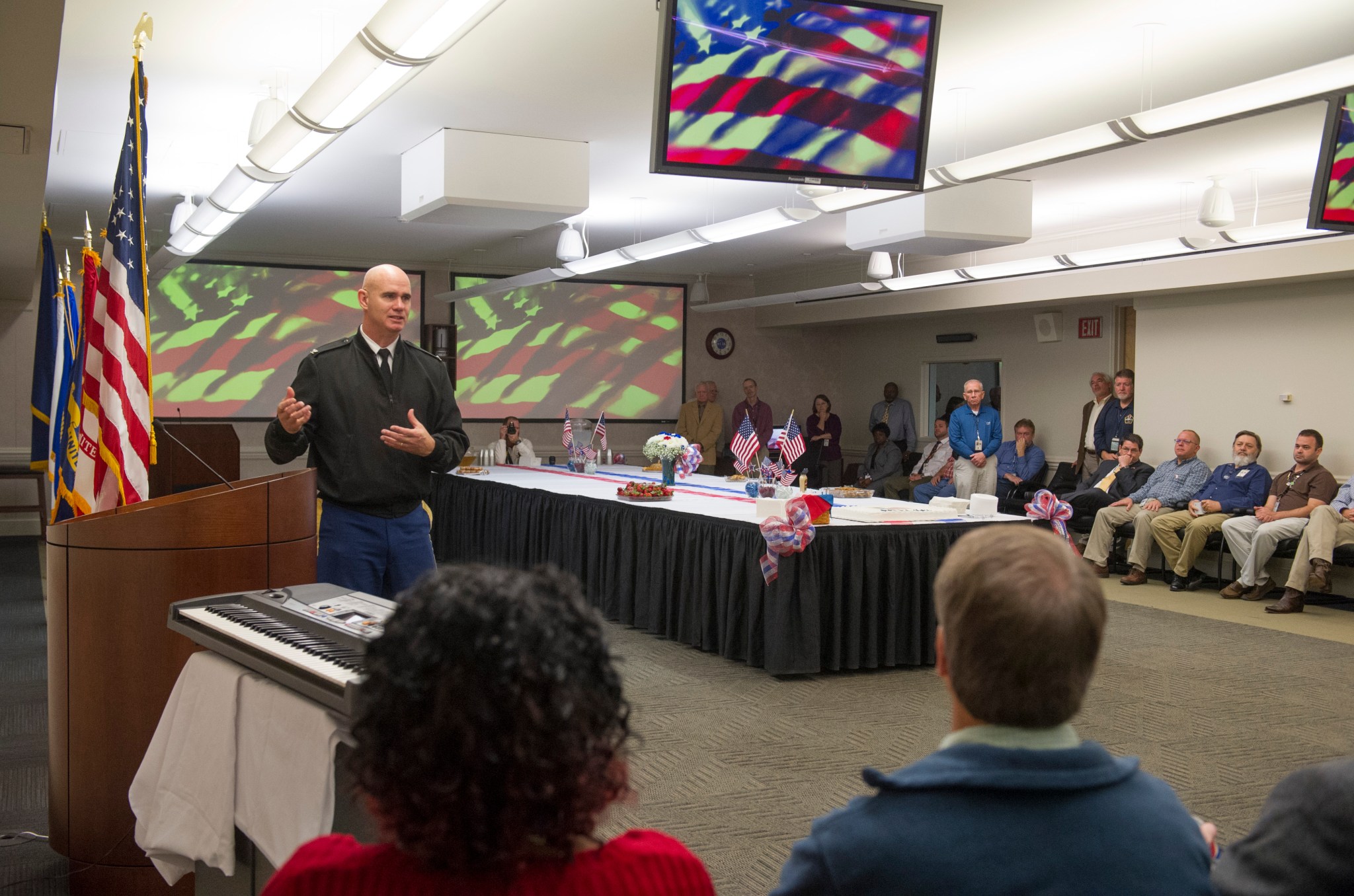
Col. Bill Marks, commander of the Redstone Garrison, addresses NASA Marshall Space Flight Center team members and veterans at the 2015 Annual Veterans Meet and Greet Program on Nov. 9, in Building 4200. During the event, Marshall leadership joined Marks in expressing gratitude to Marshall veterans for their service. Marshall’s Office of Diversity and Equal Opportunity hosts the event each year in coordination with Veterans Day to honor the bravery and service of all U.S. veterans. (NASA/MSFC/Emmett Given)
Native American Heritage Celebrated at Nov. 3 Marshall Event
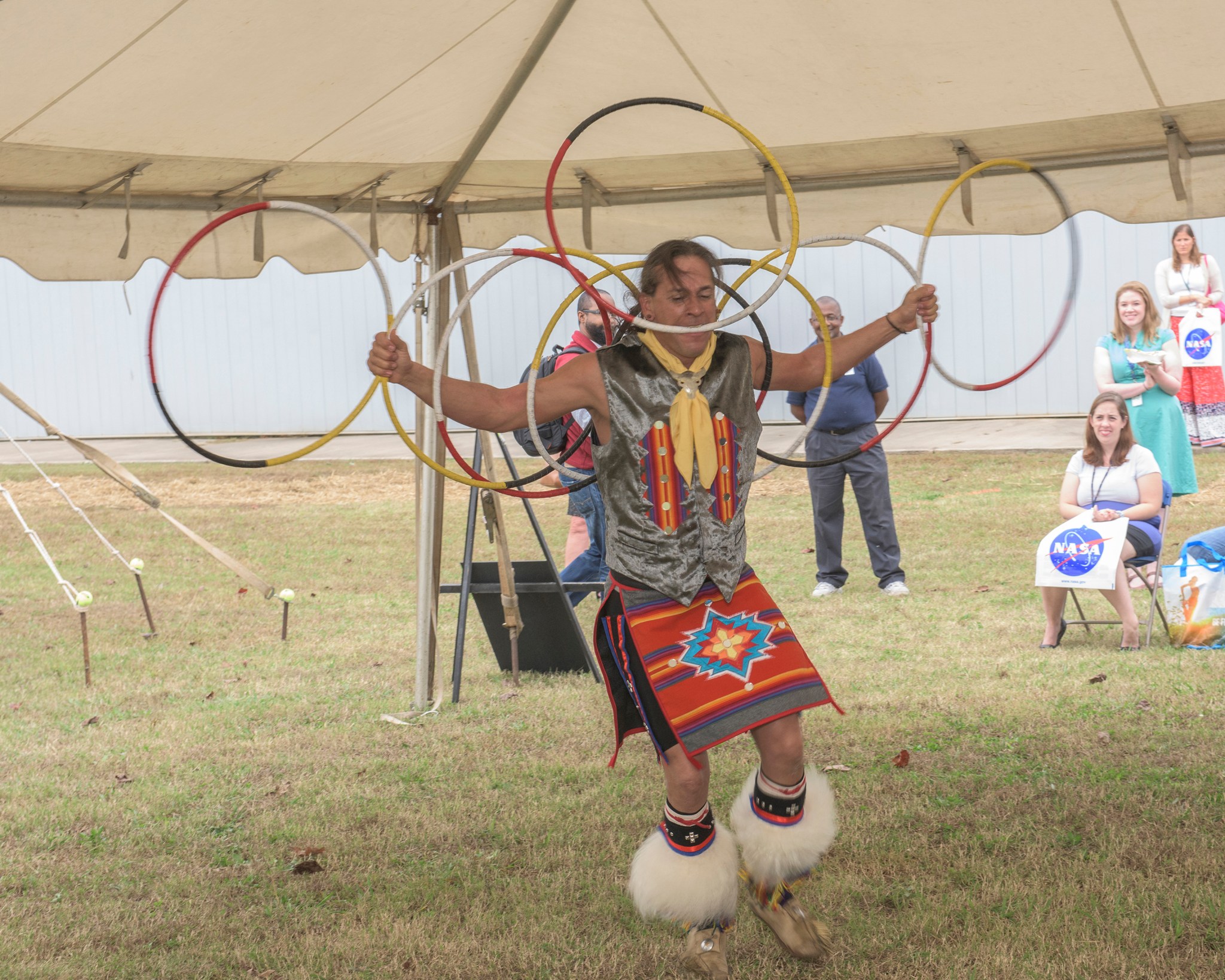
Little Big Mountain performs a traditional Native American Hoop Dance at NASA Marshall Space Flight Center’s 2015 Native American Heritage Event. The event, held Nov. 3 on the lawn of the Activities Building, Building 4316, honored the contributions, achievements, sacrifices and cultural and historical legacy of American Indians. In its earliest form, the storytelling Hoop Dance is believed to have been part of a healing ceremony designed to restore balance and harmony in the world. With no beginning or end, the hoop represents the never-ending circle of life. The special emphasis program — sponsored by the Office of Diversity and Equal Opportunity — was part of Marshall’s observance of national Native American Heritage Month. (NASA/MSFC/Fred Deaton)
This Week in NASA History: Apollo 12 Launches for Second Moon Landing — Nov. 14, 1969
This week in 1969, Apollo 12 launched from NASA’s Kennedy Space Center en route to the second moon landing. Here, astronaut Alan L. Bean holds a Special Environmental Sample Container filled with lunar soil collected during an extravehicular activity. Apollo 12 Commander Charles Conrad Jr., who is reflected in Bean’s helmet visor, accompanied him on the EVA. The NASA History Program documents and preserves NASA’s remarkable history through a variety of products — photos, press kits, press releases, mission transcripts and administrators’ speeches. For more pictures like this one and to connect to NASA’s history, visit the History Program’s Web page. (NASA)
Placement of RS-25 Engine on a Stennis Center Test Stand Featured on ‘This Week @NASA’
The placement of the first RS-25 engine to be tested for NASA’s Space Launch System rocket is featured in the latest edition of “This Week @NASA,” a weekly video program broadcast nationwide on NASA-TV and posted online.
On Nov. 4, engineers at NASA’s Stennis Space Center helped NASA take another step on the journey to Mars by placing the first RS-25 flight engine on the A-1 Test Stand, in preparation to certify it for use with the new SLS rocket. The RS-25 engines are former space shuttle main engines that are being upgraded to meet the requirements needed for the massive SLS, the agency’s newest deep-space exploration rocket with capabilities to ferry astronauts to Mars, asteroids and beyond. The first RS-25 flight engine is scheduled for testing in the first part of 2016.
View this and previous episodes at “This Week @NASA” or at https://www.youtube.com/user/NASAtelevision.
Obituaries
Richard Cizek, 87, of Huntsville, died Oct. 18. He retired from the Marshall Center in 1991 as a program analyst.
Bufford E. Gallaher, 92, of Huntsville, died Oct. 31. He retired from the Marshall Center in 1985 as an electrical engineer. He is survived by his wife, Charlotte Brown Gallaher.
Howard C. Camp, 92, of Huntsville, died Nov. 7. He retired from the Marshall Center in 1990 as a program analyst. He is survived by his wife, Janet Camp.




